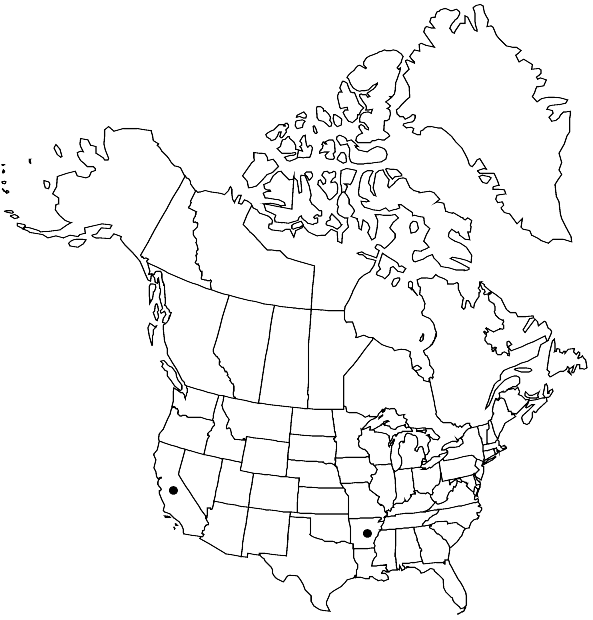Fissidens taylorii
Syn. Musc. Frond. 1: 65. 1848,.
Plants 1.4–1.6 × 0.5–1 mm. Stem unbranched; axillary hyaline nodules present; central strand absent. Leaves as many as 9 pairs, lanceolate, acute to obtuse-apiculate, to 0.5–1 × 0.1–0.2 mm; dorsal lamina narrowed proximally, ending at insertion or slightly before; vaginant laminae 1/2–2/3 leaf length, ± unequal, minor lamina ending near margin; margin ± entire, elimbate or irregularly limbate, limbidium best developed on perichaetial and subtending leaves, limbidial cells 1-stratose, infrequently 2-stratose; costa ending 2–3 cells before apex to percurrent, bryoides-type; laminal cells 1-stratose, smooth, slightly bulging, firm-walled, irregularly hexagonal, 9–11 µm, many slightly longer than wide. Sexual condition rhizautoicous and gonioautoicous; perigonia gemmiform, proximal to infertile and fertile stems, and axillary. Sporophytes 1 per perichaetium. Seta 2–23.5 mm. Capsule theca exserted, erect, radially symmetric to ± arcuate, bilaterally symmetric; peristome bryoides-type; operculum 0.2 mm. Calyptra and spores not seen.
Habitat: Moist soil on banks of drainage ditches
Distribution

Ark., Calif., Mexico, West Indies, South America, Pacific Islands (New Zealand), Australia.
Discussion
Fissidens taylorii, named in honor of the collector of the type specimen, Thomas Taylor, an Irish botanist, has been collected in the United State only twice. It is similar to F. curvatus by virtue of its dimorphic stems and typical bryoides-type peristome, but differs in its shorter costa and weaker limbidium. The limbidium can be quite variable; smaller leaves can be elimbate while larger leaves are limbate on all laminae.
Selected References
None.